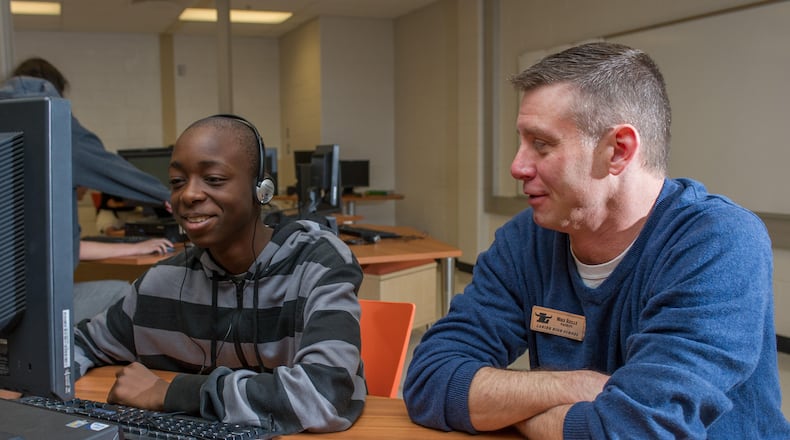Education experts know that meeting kids on their level is often the best way to teach concepts – particularly if those concepts are perceived as being bland and boring. That’s often the way young students look at coding, a fundamental step in learning how computers think and function. But by connecting the seemingly dull with an activity most kids can relate to, Jason Freeman is changing attitudes about technology.
Freeman, a professor in Georgia Tech’s School of Music, helped develop EarSketch, a coding program that allows users to produce original music. It’s become an attractive way to get kids involved in learning and using technology.
“My background is in music and computer science, and I’ve always used technology in my practice to create new and unique relationships between consumers and composers,” said Freeman, who has been at Tech for 12 years. “I’m also someone who is deeply invested in [science, technology, engineering, arts and math] education, so in the last six years, I’ve started looking at the same strategies I’d use for composers to engage students in music making and coding.”
»Gwinnett school in the running for $60k prize. See how you can help
»Gwinnett teacher honored for 'innovative' methods
Blending the two isn’t as abstract as it may sound, Freeman says. “Music is something that has a connection to the real things students care about. It’s kind of a magical way to get them engaged, and that’s a huge challenge in STEAM education. But with EarSketch, they can interact with music through code, and they can do things they could never do with a traditional music platform. We’re able to create interactive applications that ask users about the kind of music they want - pop, gospel, hip hop and so on – using a library of about 4,000 sounds as a starting point. Students can even record their own sounds, too.”
The program grew out of conversations between Freeman and his EarSketch co-founder, Brian Magerko a musician and professor of digital media at Tech. “We were looking at ways to collaborate and settled on this problem of how to engage students in coding,” said Freeman. “We both saw the same thing: We use computers, but very few of us understand how they work, let alone how to control them or understand their potential.”
The two also consulted with experts in the K-through-12 world about how to make the program appealing, then they formed partnerships with high schools in Gwinnett and Fulton counties to introduce kids to the idea.
“These are two districts that are very vested in bringing computer science courses to their schools,” said Freeman. “Typically, we put it in courses taken by 10th and11 graders.”
»State says these are Gwinnett's best schools. Does your kid go to one?
»These are Gwinnett's most improved schools, according to the state
Mike Riley, a technology teacher at Lanier High in Sugar Hill, piloted the EarSketch program about five years ago.
“My ambition is to create more diversity among computer science learners, and this program lets all kids relate to that through music,” he said. “They can download the music they make to their devices and share it. It’s very cool, and we have some really talented kids who break out some great tunes.”
Beyond the music, Riley knows EarSketch is teaching other valuable lessons.
“It’s really computational thinking – the conditions and series a computer might go through, and music works very well with that thinking,” he said. “There are counts and measures that go into putting a song together. Kids who have used it appreciate music more, and it’s making them better musicians.”
Since he began tracking data three years ago, Freeman has noted that students who are engaged in developing their computing knowledge also tend to be more persistent in all their studies. “We’ve found statistical gains that support that,” he said. “And we’re finding across both male and female students. In fact, before they start using EarSketch, females generally are not as engaged as their male counterparts. But as a group, they respond so strongly to EarSketch that they’re on par, of even above, male students in terms of how they feel about belonging in the field.”
To date, about 90,000 students have used EarSketch, and the numbers could easily go higher. “It’s online, it’s free and anyone can use,” said Freeman.
About the Author
The Latest
Featured

